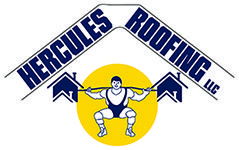Your roof is one of the first lines of defense in your home’s safety. Every day your roof protects against wind, rain, and heat. Over time, these elements can damage your roof and leave your home exposed. In most cases, your roof’s deteriorating condition is not always evident so you have to take action as quickly as possible to avoid compromising your home.
The best way to protect your roof from storm damage is by taking preventative action. A leak or tear may be unnoticeable for weeks and it will only get worse in the meantime, so regularly checking around your home is important.
1) Inspect outside
Damages to your roof damage can be difficult to find, most are thin cracks or loose shingles. Especially after a severe storm, rain and wind can cause these problem areas to escalate and lead to leaks. In case of heavy winds, make sure to keep an eye out for damaged shingles and siding. It might seem insignificant but it can open up the possibilities of further damage.
2) Watch out for trees
Watch out for any trees or branches that hang over your home, Before a storm remove any loose or hanging branches that can hit against windows or onto a roof. Regularly trim trees to avoid costly damages in the future. Strong winds can cause tree limbs to fall on your roof which may penetrate the surface. Also, leaves can clog your gutters and if left unattended, then water will not drain and possibly break the gutter itself. If you have a ladder, consider cleaning out your gutters – which can take easily take minutes.
3) Water damage
After rainfall, check that your gutters are free-flowing and that the downspouts are angled away from your home’s foundation and into a drain or ditch. Water damage can easily turn into flooding during a storm, which can be costly.
Hurricane season is upon us, meaning torrential downpours and aggressive winds could cause serious damage to your roof. Your roof is your first line of defense, and its ability to withstand a hurricane is essential in protecting you and your family.
So what exactly can you do to prevent roof damages? Our expert roofers at Hercules Roofing suggest three ways to avoid severe damage from occurring to your home.
1. Check Your Attic
The first thing you’ll want to do is check out your attic. Look for any points of light shining through – these would indicate that there are small holes that could potentially let in wind and water. Additionally, stains or dark spots on your plywood could also mean leaks or mold.
Be sure to also examine the rafters for protruding nail tips, because this could mean that the underlayment is not adequately secured.
2. Inspect Your Roof
Your roof has the highest probability of creating an opening during a storm, so it’s essential to review it from the outside as well.
23 October 2024
Choosing the right roofing contractor in Florida is crucial for ensuring that your roofing project is completed effectively and safely. Here are some key factors to consider: 1. Licensing and Insurance State License: Ensure the contractor holds a val...
21 January 2020
Most people don’t think about the roof over their heads until a leak ruins their furniture, electronics, or another item. One sure way to know you need a roof replacement is if your roof is older than 20 years old. However, age isn’t the only d...
28 August 2019
Your roof is one of the first lines of defense in your home’s safety. Every day your roof protects against wind, rain, and heat. Over time, these elements can damage your roof and leave your home exposed. In most cases, your roof’s deteriorating cond...
01 August 2019
You have a roof over your head- now it’s time to keep it that way and prolong its lifespan! Taking care of your roof can be valuable in the long run in saving you time and money for replacing your roof. Here at Hercules Roofing, we want to help you w...
20 June 2019
At Hercules Roofing, we talk a lot about how it is important to regularly inspect your roof. Early detection of leaks can prevent headaches – literally. As water gets into your home, mold starts to grow which can cause a multitude of health problems,...
07 July 2018
Hurricane season is upon us, meaning torrential downpours and aggressive winds could cause serious damage to your roof. Your roof is your first line of defense, and its ability to withstand a hurrican...
28 August 2019
Your roof is one of the first lines of defense in your home’s safety. Every day your roof protects against wind, rain, and heat. Over time, these elements can damage your roof and leave your home expo...
01 February 2018
There’s something special about the roof over your head, so why not treat it to a facelift? This winter, move forward with roof replacement as your next home remodeling project. Here are five things t...
21 August 2018
Protecting your home at all costs is the ultimate goal to ensure that you and your family are safe. Roof repairs can cost homeowners a tremendous amount of money each year because of neglected mainten...
07 June 2018
Hurricane season is not something that you walk into blindly. Being prepared and ready for any and all situations is the only way to fully protect yourself from the unpredictability of a storm. Your h...








